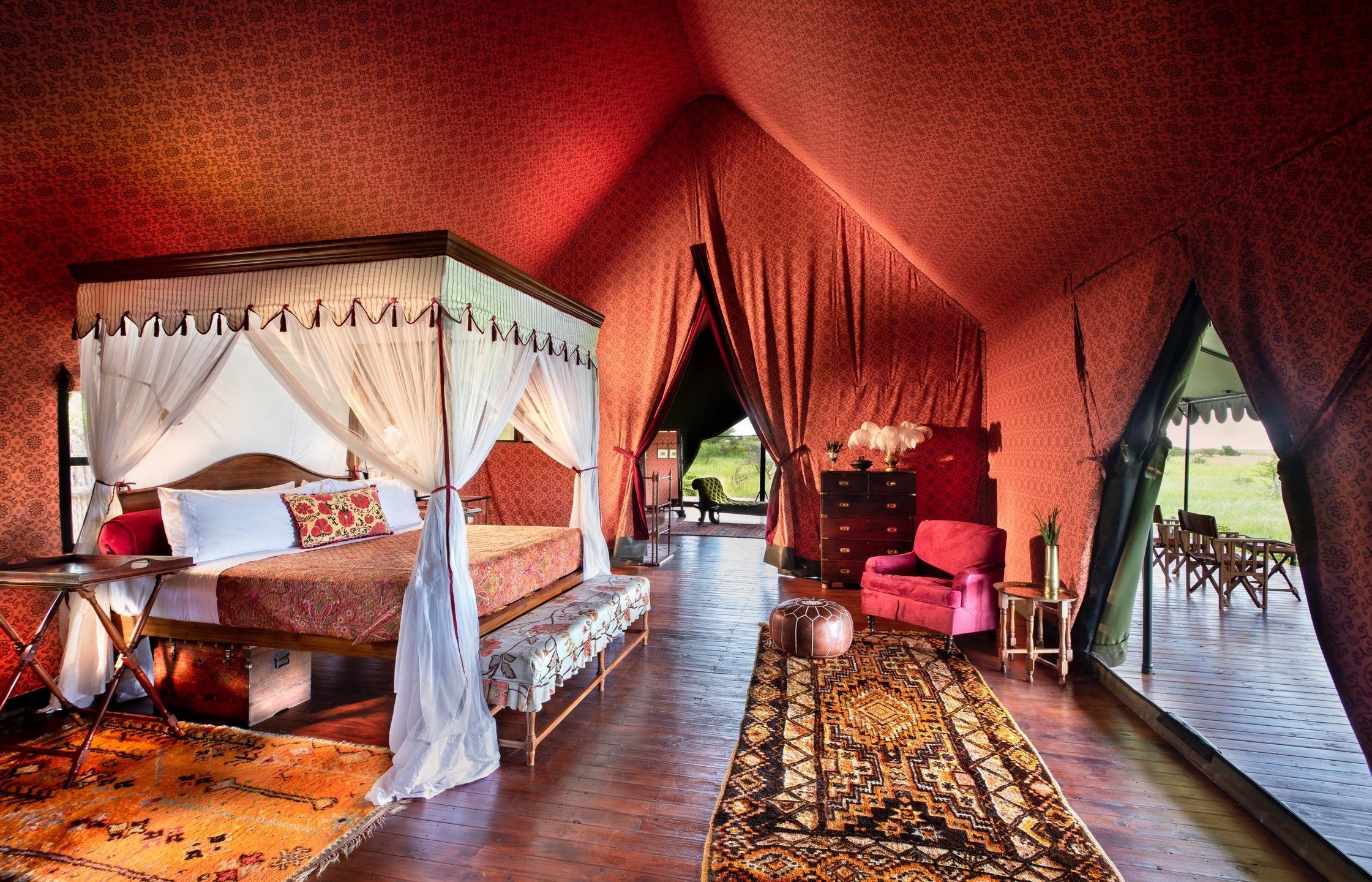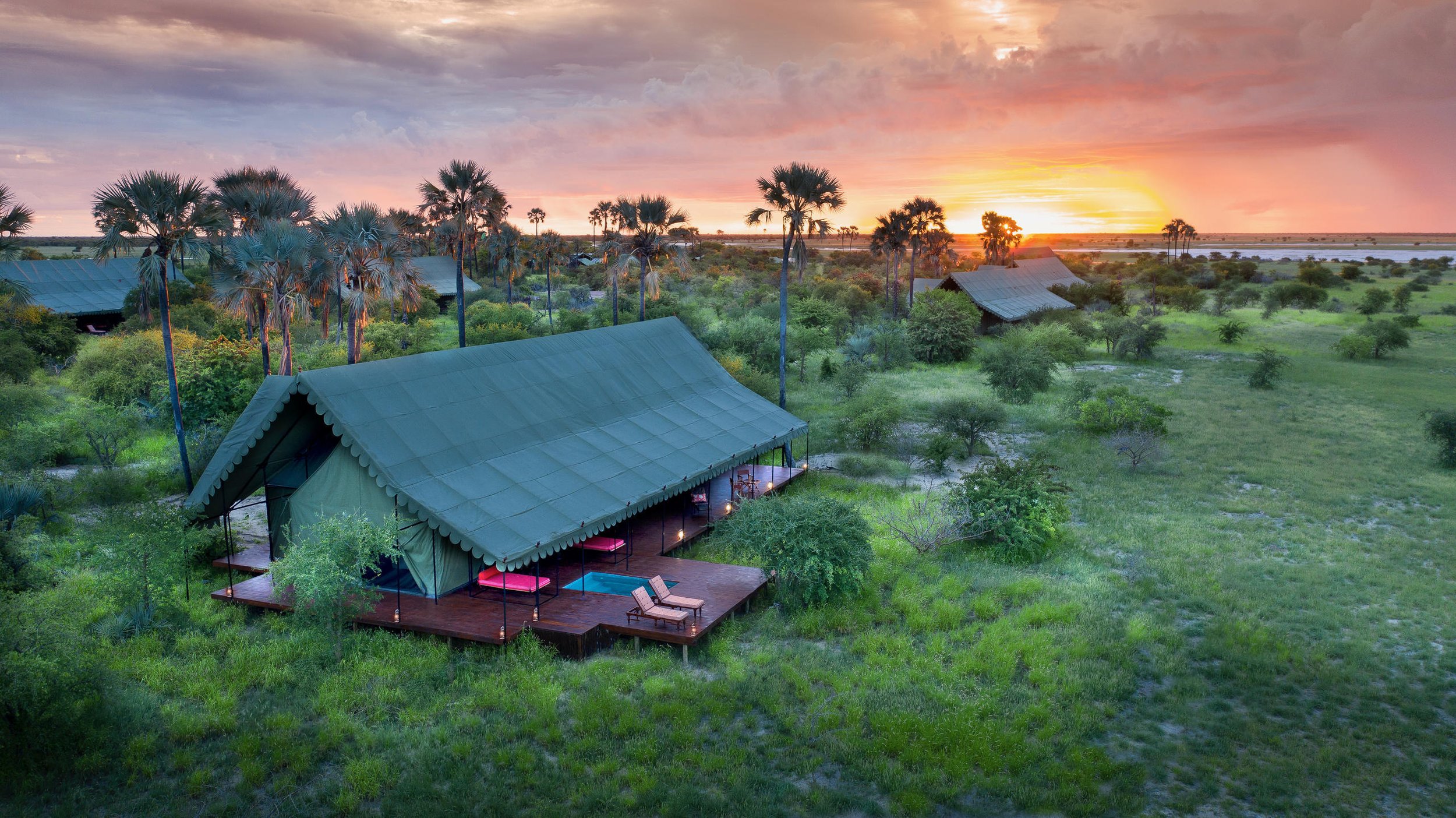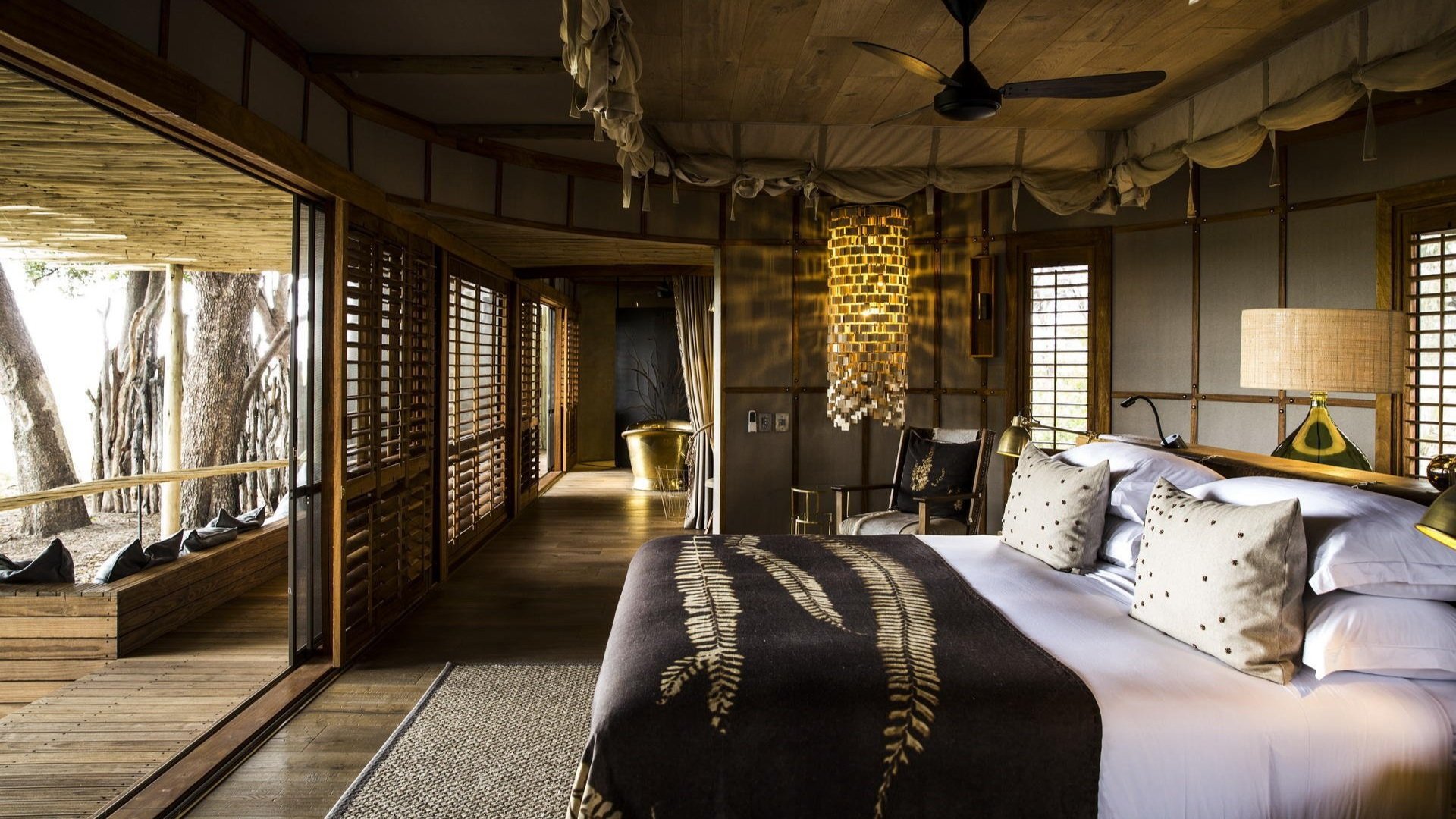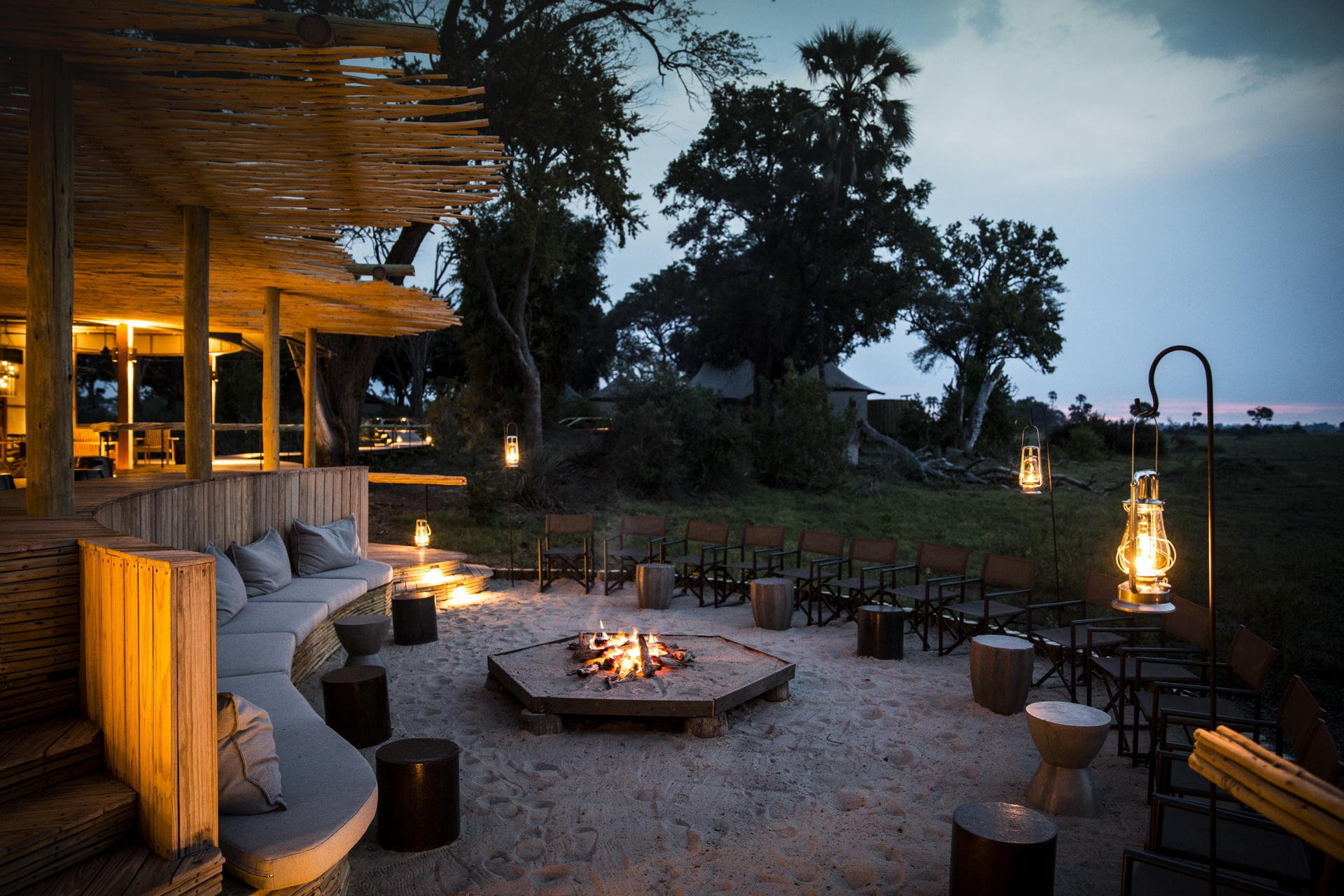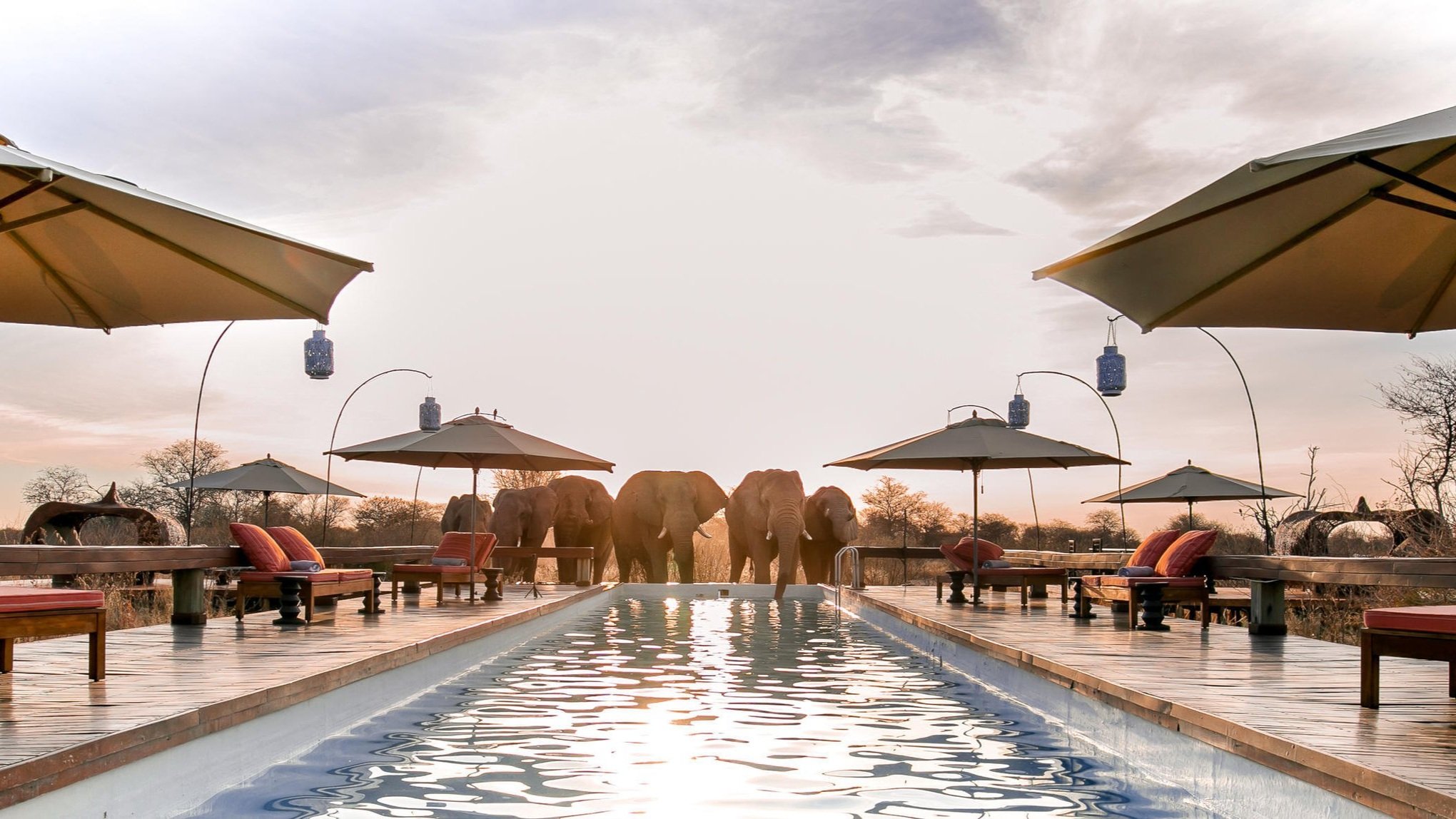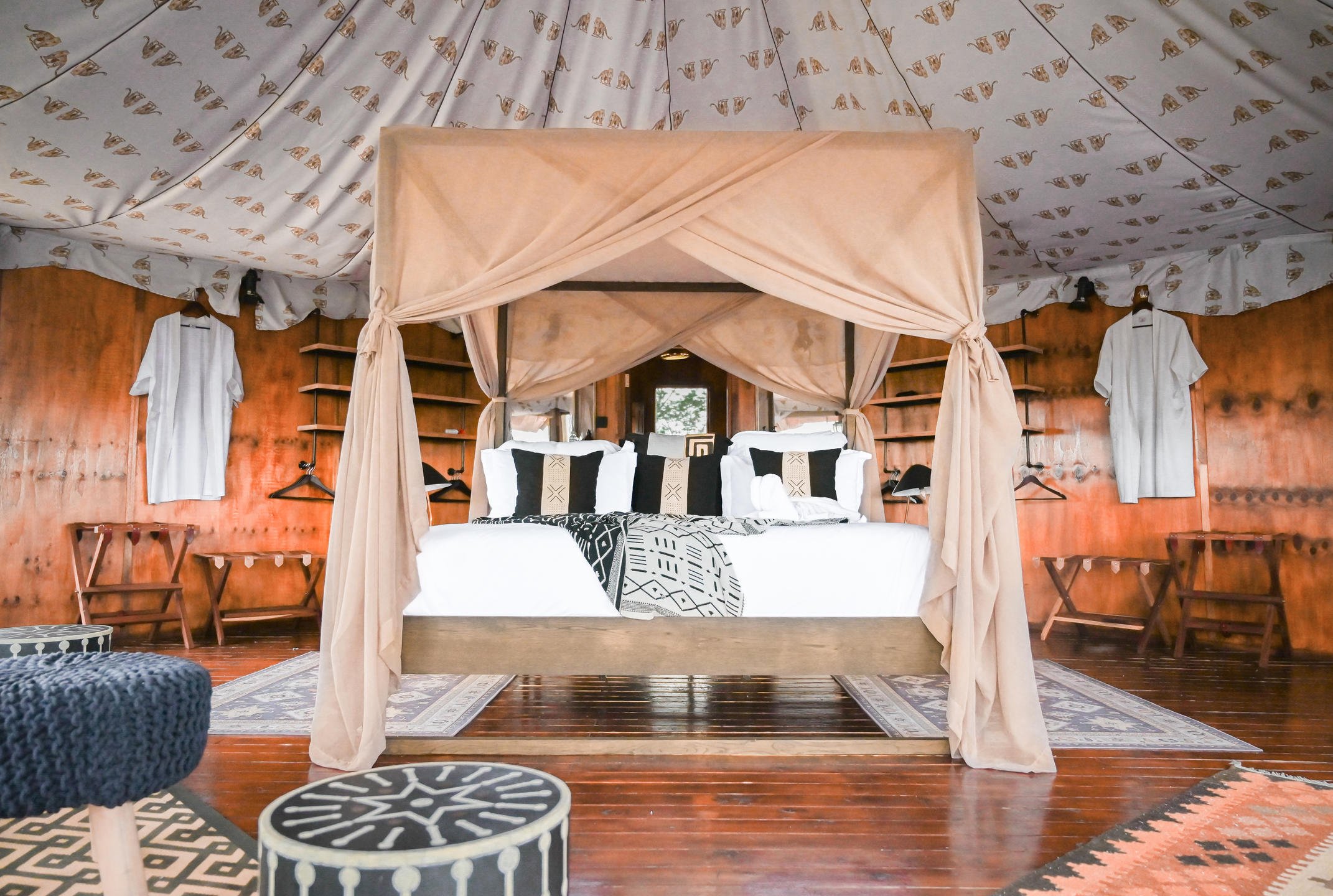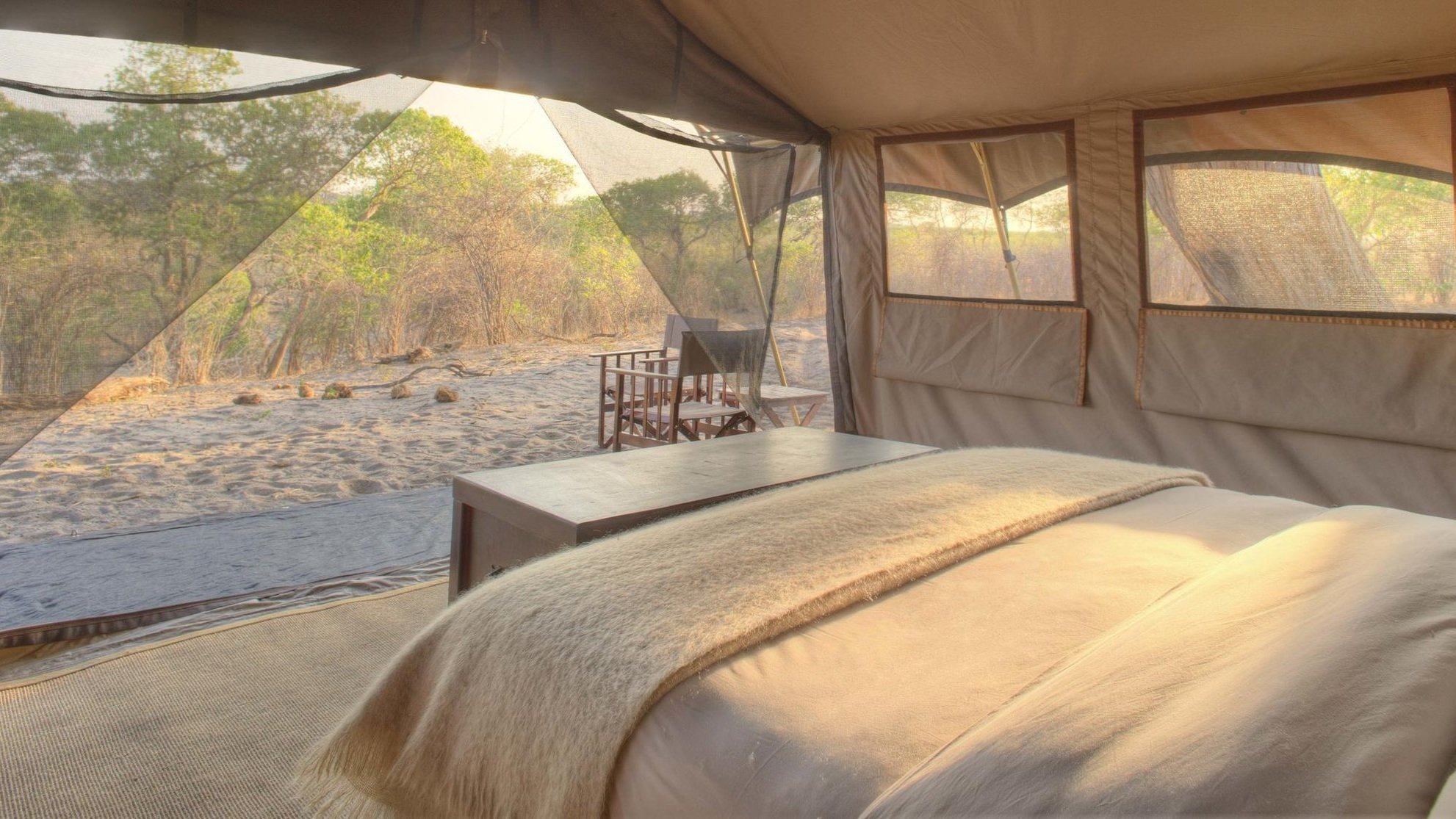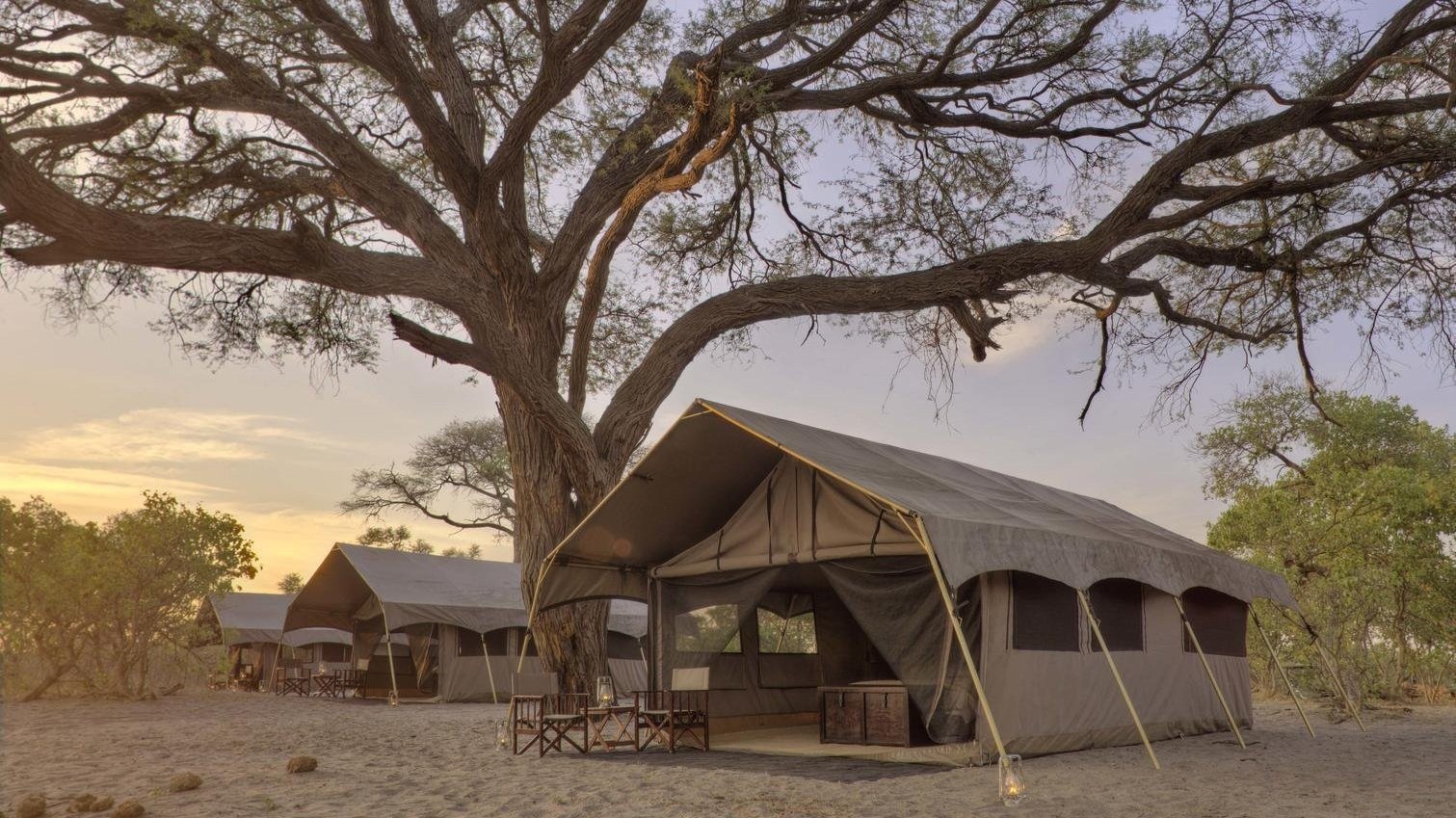The Botswana Pocket Guide
Written by Courtney Drysdale
At 581.730 km2, Botswana is roughly the size of France and a true testament to the beauty and wonder of Africa. The country prides itself on the protection and conservation of its biodiversity and abundant wildlife, making it one of the best game-viewing destinations on the planet. Here is your compact guide to Botswana…
Botswana at a Glance
In some shape or form, nearly half of Botswana is a protected area and this sustainable mindset extends into its varied luxury and affordable stays. Don’t be fooled by its seemingly arid landscape, Botswana transforms when the rains come and also has plenty of hidden gems, from lush deltas to stark salt pans making it an incredible all-around holiday destination.
Population
At about 2.3 million people, just less than Namibia, most of Botswana’s people reside in urban areas, such as Gaborone, Maun and Francistown, leaving vast areas of land completely devoid of human presence.
History
Some of Botswana’s earliest inhabitants were the San people, also referred to as the Basawara. This nomadic group was then followed by the Khoi and Bantu-speaking people. Before its independence in 1966, Botswana was referred to as Bechuanaland and was a British protectorate. After gaining independence and thanks to Sir Seretse Khama, along with many of his predecessors, Botswana’s economy has grown in leaps and bounds.
People & Culture
The largest group in Botswana are the Batswana people — Motswana as the singular — who speak Setswana, the national language. Other far smaller groups include the Basawara, Kalanga, Ndebele, English and Afrikaners. Botswana is also home to the Tsodilo Hills, a UNESCO World Heritage site in the northwest of the country. Here visitors can explore the caves and look upon ancient rock art made by some of Botswana’s earliest inhabitants.
Languages
English is Botswana’s other official language and is widely spoken, including at most lodges and accommodations. However, here are some useful phrases to keep in your back pocket when you are in more remote areas:
Mma – Ma’am
Rra – Sir
Dumela – Hello
Ke a leboga – Thank you
The Lay of the Land
Located in southern Africa and sitting just above South Africa, Botswana also shares its borders with Namibia, Zambia and Zimbabwe. The country can be roughly divided into 3 distinct environmental regions. The Hardveld ranges over eastern Botswana and is made up of rocky outcrops and shallow sand cover. This is also the region where you can find the Makgadikgadi Salt Pans. The Sandveld encompasses the Kalahari and makes up most of the country. Lastly, encroaching on the northern Sandveld is the Kalahari basin, featuring ancient lake beds that help maintain the Okavango Delta. Botswana is generally flat, with a few higher points such as Tsodilo Hills.
Desert
The Kalahari Desert takes up most of Botswana and is a surprising wildlife hotspot. The landscapes vary from red ochre dunes to sun-bleached plains and are home to plenty of unique wildlife like the black-maned Kalahari Lion, bat-eared fox and oryx.
Salt Pans
The Makgadikgadi Salt Pans, which are situated in the east of Botswana, offer stark and awe-inspiring landscapes with rocky islands and ancient baobabs, set against the backdrop of a seemingly endless white expanse.
Inland Delta
The magnificent Okavango Delta is a treasured UNESCO World Heritage site in the northwest of Botswana. This inland delta floods annually and supports a vast array of animal biodiversity from wild dogs to the Big 5. Thanks to various conservation efforts, the delta offers an unmatched wildlife viewing experience that will surely delight any traveller.
Rivers
In the south of the country, the great Limpopo River runs as a border between Botswana and South Africa. In the north of Botswana, multiple rivers form the lifeline to the Chobe Region, such as the Chobe River and the Zambezi. The meandering Linyanti, Khwai and Savuti Rivers feed the marshes and landscapes across the Chobe and Delta, sustaining its large populations of wildlife.
Wildlife and Safari
Botswana is an incredible safari destination, boasting tremendous biodiversity and is aplenty with all kinds of wildlife. Whether you’re visiting its deserts, salt pans, delta or anywhere in between, here’s what you can expect to see in Botswana:
Animals
Thanks to conservation efforts and plenty of wild spaces, Botswana has a truly outstanding abundance of wildlife. Expect to see huge elephant herds wandering freely next to main roads, families of wild dogs darting through the bush, heavy set hippos sunning themselves on river beds, the Big 5 and warthogs casually wandering through Kasane streets. Botswana is home to approximately 150 mammal species, 131 reptiles, 34 amphibians and 99 species of freshwater fish.
Plants
Botswana consists of 7 different eco-regions, ranging from wetlands, woodlands, bushveld and Kalahari savannah. Much of the rich biodiversity of plants is concentrated around the Okavango Delta, with an estimation of plant species between 21.500 and 3.000, of which 15 are endemic and 43 are on the IUCN Red List. Some iconic plants to look out for are the water lilies of the Delta, colossal ancient baobabs and inland Ilala palms that crop up around the salt pans heading north.
Birdlife
With over 570 species, including the Kori (Kgori) Bustard and grand flocks of flamingos, Botswana offers brilliant birding experiences with top spots including Kasane, Savuti Marsh, Moremi Gorge and the Makgadikgadi Salt Pans. BirdLife Botswana is a fantastic organisation that offers great tips on where to go for the best birding experiences. The organisation also has various community empowerment schemes and conservation projects.
Climate and when to go
Botswana's climate ranges from arid to semi-arid. It is defined by hot and rainy summers, usually between November and March. This rainy season is the best time to spot migrating birds, predators and baby animals. However, many lodges in the Okavango Delta close during these months, so do check before you book. The dry season, between April and October, is the prime time to spot animals that come down to water sources. It is also when the Delta floods which makes it a great time for water-based activities. This is a fantastic time to visit the salt pans, which will be dry in the mid to late sections of the dry winter months, from about June to September.
Top attractions
The Kalahari Desert
Covering over 80% of Botswana is the Kalahari Desert. At the heart of the country sits the Kalahari Game Reserve which is the largest and most remote reserve in Southern Africa and the second largest in the world, spanning a whopping 52.800 km2 area of red ochre plains and dunes. Despite receiving more rainfall than other deserts, still, less than 250 mm per annum, the Kgalagadi (as it is referred to in Setswana) supports an incredible abundance of life. The desert encompasses 3 exquisite game reserves; namely the Kgalagadi Transfrontier Park, the Central Kalahari Reserve and Khutse Game Reserve.
Makgadikgadi Salt Pans
Nestled in the east of Botswana, as you approach Makgadikgadi Salt Pans, the land around you transforms from shrubland to vast expansive grassland. This is until you reach the moon-like surface that stretches far beyond your line of sight, so big that you can see the curvature of the earth. This ancient lake is a surprising biodiversity hotspot, with migrating zebra, elephant, and plenty of other game crossing its plains to reach the lush rivers of the north. To the northeast lies Nata Bird Sanctuary, a birders' haven, while to the west of Sua Pan lies Kubu or ‘hippo’ island with its ochre red baobabs and grey rock.
Chobe
Situated in the north of Botswana and bordering one of the seven wonders of the world, Victoria Falls, charming Chobe is known for its elephants and free-roaming game. This area's varied and incredible landscape will delight any adventure seeker. Take a sundowner cruise on the river, explore Chobe National Park or the quaint town of Kasane and look out for the local police station, which is home to an old hollow baobab that used to function as the town prison and post office.
Okavango Delta
Known as the Jewel of the Kalahari, this lush oasis is a UNESCO World Heritage Site situated in the north of the country and offers up plenty of water-based activities with unrivalled game viewing. From swimming lions to colossal elephant herds and close-knit families of wild dogs, the Delta is divided into concessions that each prioritises the protection and conservation of this magnificent land and its wildlife, making it the ultimate sustainable safari destination.
Accommodation
Here are a few of our favourite stays in Botswana:
In the Makgadikadi Salt Pans
Jack’s Camp by Natural Selection is a classically designed, luxury safari camp nestled in Makgadikgadi Salt Pans. With conservation at the heart of this camp, this camp optimises exclusivity and thoughtful luxury in everything from the design to the incredible activities on offer. Guests can explore and learn about this magical expansive wilderness that is home to unique creatures in a number of ways and relax in gorgeous accommodations set against a backdrop of awe-inspiring salt pans.
In the Okavango Delta
Mombo Camp by Wilderness is set against the animal-abundant and glistening waterways of the Okavango Delta. The camp's design and sustainable ethos are a love letter to this magnificent biodiversity hotspot. Guests can relish the exquisite design and featherlight footprint of the camp or tick off a bucket list safari experience exploring this UNESCO World Heritage site.
In the Kalahari Desert
Set against the dramatic backdrop of the Kalahari Desert is an uber-luxurious stay that celebrates this wild and inspiring land on which it sits. Feline Fields by Mantis is a truly exclusive desert getaway with incredible vistas and excellent game viewing. The perfect way to explore this magical landscape, this lodge offers luxurious accommodations and a range of safari and cultural experiences guaranteed to wow any explorer.
In the Chobe Region
Savute Under Canvas by &Beyond is a luxurious escape set in the beautiful and animal-abundant Chobe Region of Botswana. Nestled along the Linyanti River and named for its proximity to the Savuti Marsh with its infamous elephant-hunting lions, Savute Under Canvas optimises safari excellence and Botswana hospitality. This remote camp offers all the luxury and animal magnificence that &Beyond is recognised for, all combined with a sustainable model at its centre.
Need to know
Visas & Passports
All visitors entering Botswana must carry a passport that is valid for at least 6 months. Citizens of commonwealth countries do not require a visa to enter Botswana for 90-day visitations. You can check if your country requires a visa here. You can apply for your visa online and find out more about the requirements on the same site.
Travelling with Children
If you are travelling with a child under 18 years old, you will require the following documents; a valid passport with at least six months, a visa (please see the previous point), and a certified copy of their full and unabridged birth certificate. If the child is travelling with only one parent or an adult who is not their parent, a certified letter of consent for the child to travel from both parents and an affidavit must also be included.
Vaccinations
If you have travelled through a country with a risk of yellow fever, you will need to get a vaccination. Check the list of relevant countries at the World Health Organisation.
Medication
Malaria can be found in northern Botswana, particularly throughout the Okavango Delta and in the Chobe region. The risk of infection increases during the rainy season, between November and April. Please consult your doctor about anti-malarial medication if you are travelling to these areas and take relevant precautions. Most medications are easily found at pharmacies throughout the country. If you require specialised or prescription medication, definitely bring it with you. Most lodges and camps will also have a first aid kit.
In Case of an Emergency
Maun, Kasane and Gaborone all have multiple good medical facilities. Please save the following emergency contact numbers on your cell phone:
Toll-free emergency numbers:
Ambulance 997
Police 999
Fire Brigade 998
Medical Rescue 911
Medical air rescue 390-1601
Okavango Air Rescue 995
Okavango Air Rescue is a professional medical rescue service based in Maun that will evacuate patrons from remote locations via helicopter. The service serves the Okavango Delta, as well as sections of the Kalahari and sections of Chobe. Many lodges have affiliation with this service, however, consider enquiring whether you need to become a patron. You can read more about Okavango Air Rescue here. By becoming a patron, you not only support this great service, but you help contribute towards the air evacuation of local people who may not have access to insurance. PS: While travel insurance is not compulsory when entering Botswana, it is advisable.
Ease of travel
Time zone
Botswana’s time zone falls under Central African Time or CAT (GMT+2).
Drive
Botswana has tar roads stretching across the entire country, with access points from all its neighbouring countries. Generally, the roads are quite good, however, do expect some roads to have potholes and some routes are only accessible via a dirt road. For this reason, it is best to use a 4x4 wheel drive vehicle. It is also important to note that during the rainy season, driving can be more challenging and some roads are not passable - please check with us before planning your route in the rainy season. Try to avoid driving at night, as there is little fencing and it can be difficult to spot animals like donkeys and cattle on the road. Botswana also has very strict speed limits, especially between villages, where the speed limit is usually 60 km/hr. There are various ports of entry to each neighbouring country; some main ones are Martin’s Drift (South Africa), Ngoma Bridge (Namibia), and Kazungula (Zimbabwe and Zambia). To see other entry points as well as their contact details, follow this link.
Fly
To reach Botswana by air, you must fly with either Air Botswana or Airlink and connect through Johannesburg, Gaborone, Victoria Falls or Cape Town. In Botswana, there are airports in Maun, Kasane, Francistown, Gaborone and Jwaneng. The baggage allowance for Air Botswana is 23 kg of checked baggage and 1 piece of hand luggage at 7 kg. Airlink allows 20 kg for economy class and 30 kg for business class with checked baggage. Airlink’s hand luggage allowances are 8 kg. Charter flights, like those that fly from Maun into the Delta, have a luggage allowance of 15 kg checked luggage (which must be in a soft shell bag) and 5 kg hand luggage.
Fuel
Due to the small population and great distances between towns and cities, always be mindful of fueling your car. Some more remote fuel stations do not always have fuel in stock. When planning long-haul trips in remote areas, do consider distances between stations and carrying extra fuel.
Currency
The currency in Botswana is the Pula (P/BWP) and the subdivided 100 Thebe is equivalent to 1 Pula. The Pula is a stable currency that is similar to the South African Rand, however, it is slightly stronger.
Exchange
Foreign currency, such as Euros, British pounds, South African Rand and US Dollars can be changed at airports, bureaux de change, banks and even authorised hotels.
Cash and card
Cards are accepted at almost all shops, restaurants, lodges and fuel stations throughout the country. ATMs are usually found in larger urban areas such as towns and cities. However, it is always a good idea to have a bit of emergency cash on you.
Tipping culture
Tipping is always optional, but it is a meaningful way to show your appreciation for great service. In Botswana, a general rule of thumb is about 10% gratuity, but this is up to your discretion. When tipping guides or lodge staff, it is usually best to do so at the end of your stay.
Cellular and telecommunication
The dialling code for Botswana is +267. It is easy to get a sim card and some good service providers include Orange and BTC (which tends to have the best signal). However, many remote locations do not have a signal.
Power plugs
Most plugs in Botswana are round. Type D plugs (round with 3 pins) are the most common, and type G (square with 3 pins) and M (round with 3 pins close together) can also be found in between, but are not common.
Drinking water
Tap water is safe to drink throughout Botswana. You can readily buy bottled water at most stays, shops and petrol stations. However, water around the Makgadikgadi region tends to be more saline due to the salt permeating the water table. When driving, always carry extra water, particularly on very long-haul trips where stops can be very few and far between.
Essential items
Botswana can get exceptionally hot, particularly between October through February. Always stay hydrated and protect yourself against the sun by regularly applying sunscreen, and wearing a hat and sunglasses. Also, don’t forget good walking shoes and swimming gear for cooling off.
From the delta to the desert, salt pans and magnificent wildlife, Botswana is an incredible safari destination with unique sights and a fantastic range of luxury and affordable stays. Head on over to Viatu to plan your next sustainable Botswana adventure.















